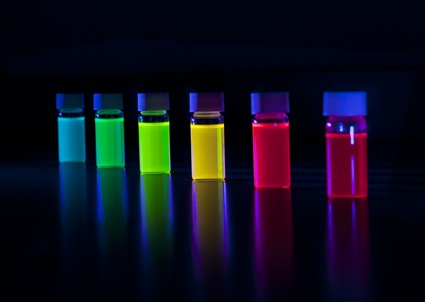The Importance of Cadmium-Free Quantum Dots
Quantum dots hold a great deal of potential for electronic display technology because they can provide better, more dazzling colour than current standard technology.
Despite this promise, the incorporation of cadmium in quantum dots has restricted their adoption, keeping manufacturers from leveraging the benefits of the technology. RoHS regulations currently state that 1,000 ppm cadmium can be used, however this exception will expire and only 100 ppm of cadmium will be acceptable.
However, study into the synthesis and mass production of cadmium-free dots, currently holds a lot of promise.
One of the major trends across electronics manufacturing is reducing the use of possibly-harmful materials. Although substances like PCBs might be more well-known, the concern is equally relevant for display technologies, and display manufacturers must be conscious of laws concerning the use of cadmium-based quantum dots.
In 2015, the European Parliament banned the continued use of cadmium in display and lighting devices. Furthermore, controls and regulations are growing in Asia, with China implementing new laws of its own. With this reality, display manufacturers are shifting from cadmium-based quantum dots and investing in cadmium-free quantum dot technology.
Future displays must comply with guidelines while meeting the demands of consumers. As such, cadmium-free quantum dot displays will soon be commonplace, and are anticipated to dominate the market with their robust performance, safety and environmental benefits. Cadmium-free quantum dots offer a less hazardous and eco-friendlier alternative for producers and consumers, providing them with the colour benefit without the risks of toxicity or liability.

Cadmium-Free Quantum Dot Applications
Cadmium-free quantum dots also have the potential for many more applications such as lighting, solar and biomedicine. In LED lighting, cadmium-free quantum dots offer exceptional colour performance without having to sacrifice efficiency. Situations where colour quality is essential include high-end retail stores, surgery, and agricultural uses, where LEDs offer lots of advantages to the grow-light and horticultural lighting industry, boosting chlorophyll absorption peaks and leading to healthier, higher-yielding plants.
Another application for cadmium-free quantum dots is in solar power. Quantum dots can be placed on thin films to create solar cells that are economical to create. Solar panel producers can use a basic low-cost printing technology to place nanoparticles onto the films.
There are also encouraging new applications in biomedicine, where scientists are evaluating quantum dots as a way to colourfully light up tumours in order to enhance the safety and effectiveness of cancer surgery. Doctors could possibly use cadmium-free quantum dots to illuminate molecules that can be bound to cancer tumours, making it possible for the surgeon to readily differentiate the good from the diseased tissue. The quantum dots are more stable than the dyes surgeons use today, meaning the illuminated cells are more brilliant for longer periods. This can give the surgeon a lengthy time window to carry out the surgery and get better outcomes.
Cadmium-Free Quantum Dots from Avantama
As legislation limiting the use of cadmium starts to appear, cadmium-free quantum dots are distinctly situated as future-proof lighting and display technology. Because of this innovative technology, the future certainly looks more vibrant and safer for manufacturers, consumers and a whole host of other application areas that will start to make use of cadmium-free quantum dots.
Avantama have developed and manufacture a range of cadmium-free quantum dots suitable for display applications. If you would like any more information about our solutions, please contact us.